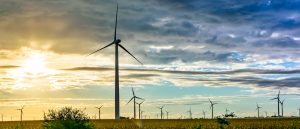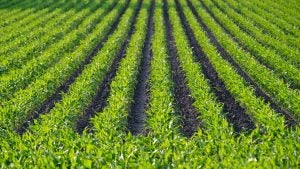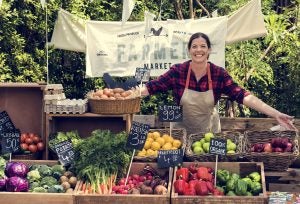Agriculture contributes only 10 percent of greenhouse gas emissions in the United States. Yet I believe its history of sustainability can be a model for other industries. And I’ve encouraged farmers to enter those conversations and take on leadership roles on this issue.
President Joe Biden agrees with me. On January 27, he signed an order stating that American farmers and ranchers have “an important role to play in combating the climate crisis.” The order directs the U.S. Department of Agriculture to solicit input from stakeholders so the agency can develop a climate-smart agriculture approach.
So the USDA is looking for public comments specifically on climate-smart agriculture and forestry; biofuels, bioproducts, and renewable energy; catastrophic wildfires; and meeting the needs of disadvantaged communities through the USDA’s climate strategies.
Luckily for the USDA, I have so many thoughts!

We need economically viable options.
Sustainability has two important components: environmental and economic. We absolutely cannot focus solely on environmental sustainability and disregard economic sustainability. Why? The reason is simple: Farmers still have to make money.
Money is, after all, the reason most people work. And while that reality might be disparaged in some corners, it’s still true. So any climate solutions we implement have to be economically viable.
Imagine that we invent a structure that is powerful enough to somehow balance the atmosphere and magically solve our climate problems. But each structure costs $5 billion to build, and $3 million each year to maintain. Oh, and we need to have millions of them built across the country. These structures might lead to environmental sustainability, but they certainly aren’t economically sustainable.
That isn’t sustainable. No amount of money can keep that type of scheme working. So it isn’t an actual solution.
We can’t punish people alive today to save those alive in the future.
I know people have a sense of urgency for addressing climate change. But we have to be careful that the medicine isn’t worse than the disease.
Here’s what I mean. Some people will advocate for an extremely high tax on gasoline. They think it discourages others from driving and helps decrease GHG emissions. But the reality is that most people have no other option. They have to drive to work, drop the kids off at school, and travel to buy groceries. So we essentially punish someone for doing something they have to do to survive. And it isn’t a stretch to see how the tax disproportionately impacts low-income households.
So we have to be careful that we don’t punish the people living now, just so we can preserve the planet for humans who aren’t in existence yet. I’m confident we can find ways to combat climate change, and not make our lives miserable.

Solutions should be things we would incorporate on our farms regardless of the climate crisis.
This one is a bit idealistic, but it’s worth mentioning. And that’s not just because the perfect example is one of my favorite topics: genetically modified crops!
Think about this. Farmers started using GMOs back in the 1990s. At that time, no one was concerned about climate change. Yet farmers liked GMOs because they increased yields, decreased or eliminated insecticide applications, and made weed management easier. They also allowed farmers to better utilize soil-friendly production methods, like no-till and cover crops.
It just so happens that no-till and cover crops also help build soil health and sequester carbon. And that’s key to managing the climate crisis. But farmers didn’t adopt GMOs for that reason, They would have used them for all the other benefits, regardless of climate change. And those are the types of solutions we need, because it makes adoption easier, cheaper, and faster.
Let’s seriously consider bioproducts.
I still remember a bottle of glass cleaner we received at a local Farm Bureau event. The cleaner itself was made from corn. The “plastic” bottle was made from corn. And it was biodegradable. I thought it was so cool.
I can’t pretend to understand why there hasn’t been more widespread adoption of plastics made from crops, or even what goes into such a process. But I’d like to see more research and development into it. We’ve become pretty good at growing corn, soybeans, and the like. If we could open new markets for these products, including single-use items, it could help solve a few problems.

Don’t forget small farmers.
One of the best things about U.S. farmers is that they’re all different. Although 98 percent of farms are owned and operated by families, no two look the same. And I believe the legacy of family farms is something worth protecting and preserving.
Often new, sustainable technology is more accessible to large farms. Those operations have larger profit margins and can justify the expense. Small farms, however, can’t always make those big purchases. So no matter what solutions we try, we have to keep this in mind and find ways for all farms to participate.
Amanda Zaluckyj blogs under the name The Farmer’s Daughter USA. Her goal is to promote farmers and tackle the misinformation swirling around the U.S. food industry.



